

Maggie Demicco, Manager of Business Development & Product Management at Parker LORD, sat down with Offshore Network to discuss how the company’s flexible joint product line, a solution typically reserved for drilling applications, is bringing value to the well intervention market.
While engineers at Parker LORD have predominantly focused their efforts on drilling applications (with products such as telescopic joint packers which are all certified and fielded on many rigs around the world), Demicco described how the company has ventured into the well intervention market, spearheaded by their flexible joint solution. Demicco stated, “This really came about by accident in some ways. Flexible joints are very common in drilling applications but had not been used in intervention applications.
“This particular unique application has a high pressure rating, higher than most flexible joints used in drilling applications. We also envisioned a solution that was compact as intervention vessels are smaller than drilling rigs and this is why it is helpful to have the flexible joint 2 metres high or less as opposed to say 5 metres or more for a stress joint. In doing so you are able to handle higher pressures with a more compact package in that case."
Demicco also described how, with flexible joints installed at the top, operators impart less of a moment on the entire riser system. Flexible joints accommodate any angular offset, much like a ball joint, so less moment is imparted into vessel structure and riser. This allows for benefits such as being able to operate more on the edge of where you could before with a stress joint, such as further off station or in rougher weather.
So far, Helix has fielded three units of this solution, the first two went into service as early as 2017, the third in 2018, and it is also being utilised in a subsea mining application, to enter service next year.
Unlocking value in challenging environments
While the flexible joint can bring benefits in the form of cost saving and safety benefits HSE, it also opens up new opportunities for operators and service providers which were previously restricted by stress joints.
For instance, Demicco commented, “If you have an intervention vessel or rig doing riser-based interventions in deeper water, say 900 metres or more, you’ve got a longer riser and that inherently is more flexible by being longer. In such applications there is less of a need for flexible joints. But if you are in shallower water like 300 metres or less, the riser is a lot shorter so it is more rigid in nature. If you have a stiffer riser system, you put more stress into the wellhead itself at the bottom and into the vessel at the top. In that case flexible joints can provide a lot more benefit with those shorter, stiffer risers if installed at the top and the bottom.”
Demicco added that the flexible joints are even more beneficial when placed at the top and bottom of a riser. Such an advantage could be incredibly useful in regions such as the North Sea which does not only have shallower waters but also rougher sea conditions and a lot of very old wellheads which have undergone multiple interventions over the years. Demicco noted, “Having a flexible joint here would help reduce the stress when you’ve got older wellheads you don’t want to replace, ensuring the field will keep producing.”
While companies such have Helix have not yet incorporated this, Parker LORD sees this as the next step which could provide even more flexibility to potentially expand operation limits even further.
Safety first
At Parker LORD, HSE is considered paramount and reducing risk is inherent in the solutions they offer, as is the case in the flexible joint.
Demicco noted, “One feature of our flexible joint is that it has two separate flexible elements, based on the different way we approach flexible joint design. One flexible element is doing the work of a seal bearing, sealing against intervention fluids. The other one is designed to handle the riser loads and the bending moments. However, while each is designed to do its primary function, if something was to happen, and a seal bearing were to fail, you have the load bearing as a secondary sealing mechanism.
“There is also a sensor between the two barriers to measure the pressure in the cavity which should read as zero in normal operations. If the pressure increases in that cavity, it the sensor will alert you if a failure has happened in the seal bearing, and then you can change it out when you have a convenient opportunity in operations. We consider that a dual barrier, a belt and suspender approach.”
Other solutions on offer
Also on the menu for well intervention operations are Parker LORD’s customisable Gimbal Bearing Assemblies, which, as Demicco outlined, have a similar story in that they were in use on drilling rigs. These are used while running a riser, below the spider and accommodate the vessel motion and support the load of the riser along with whatever equipment is connected.
Demicco said, “If you want to have a Gimbal on an intervention vessel you are often constrained on space so you can’t use an extremely large and stiff 72 inch 1.8 metres wide Gimbal in that case. This is another story where we took a product successful in drilling applications and modified it for an intervention application. Whether more space constrained, required lower stiffness, or the angles are different from drilling application, our engineer from that product line came up with ingenious design tool to take customer inputs for each application and quickly revise the equipment to adjust the parameters on the fly with for the customer.”
Opportunity on the horizon
Demicco added that the company is continuing to explore solutions across the sector, including within the well intervention space. She said, “We know how to design elastomer parts and mitigate shock and vibration. We are talking to customers to find out what their big issues are in those spaces and we typically try and target the problems other people can’t solve, have failed to solve, or unwilling to solve for whatever reason. When we talk to customers about their problems we are asking: Is there some elastomer product that’s failing too quickly and you want to extend the life or are you trying to solve a problem in a non-elastomer way? Is there some other solution we can design using elastomer to solve the problem?"
In regards to the flexible joint, Demicco added that the next step is to get this more widespread, as the hard work has been done. “We have set up this market-based product and the big initial step and cost (getting the mould to manufacture the moulded flexible elements) has been taken. We’ve got that and once we’ve validated that design to the API standard, established our manufacturing processes, that’s really the most important thing. After that it is easier to modify and package those flexible elements differently depending on the customer application. We have the mould, have capacity on the equipment, now just a matter of finding people willing to adopt it and working with them to make modest tweaks to suit their application.”
Maggie Demicco handles Product Management and Business Development for the Oil & Gas business unit of Parker LORD. She holds a B.S. in Mechanical Engineering from Brown University and a Master of Business Administration degree from Babson College.
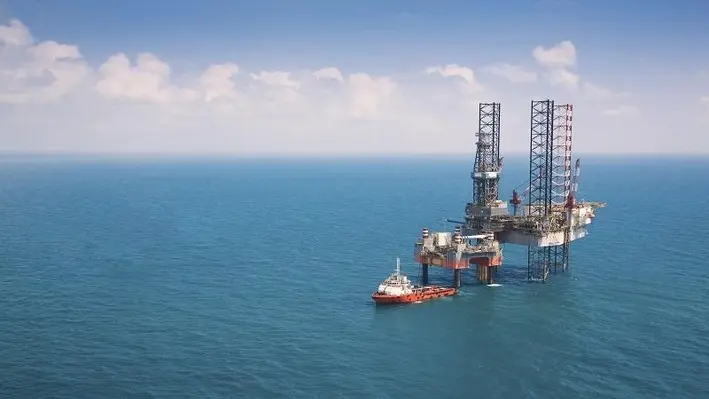

Tracerco, part of Johnson Matthey Plc, will provide asset integrity data for an operator in the Gulf of Mexico (GOM) to extend the life of over 18 risers.
Tracerco will deploy Discovery, a subsea computed tomography (CT) scanner designed for external scanning of pipelines and which operates along the same general principles as CT scanners used in hospitals.
With environmental concerns posing question marks over continued drilling in the longer term, many operators are keen to ensure that their fields are capable of producing for a much longer period of time, a phenomenon buoyed by new methods of oil and gas extraction allowing them to do so. As such, operators are looking for methods to monitor and verify their risers’ condition to ensure ongoing integrity and extend their operational life.
For life extension, regulators typically require a physical inspection to ensure the condition of the riser and CT, a technique to accurately and non-intrusively see through an item, can provide this information.
Technologies using CT, such as Discovery, provide operators with valuable inspection data on the entire pipeline, spanning the range from product to coating and all areas in between.
It is a non-intrusive external scanning technique and is easily capable of scanning through several inches of pipeline steel with no requirement to remove any protective coating, regardless of thickness and material.
Jim Bramlett, Commercial Manager North America for Tracerco, commented, “Tracerco was the first company to develop a subsea CT system and still holds the fundamental patent for the concept of subsea CT scanning dating back to 2011. Over the years since, Discovery has incorporated numerous additional patented innovations for optimising the system.”
Discovery will be used to inspect the risers and determine whether they can be extended past their original design life by gathering real time data on a variety of integrity issues including pipeline corrosion, pitting and wall thinning. This will allow the operator to work with the local authorities to get their permit extended and potentially realise billions in continued revenues from the asset.
“Discovery provides the integrity insights to know the unknown enabling critical decisions regarding life extension to be made,” added Bramlett. “It does this while the risers are still in full operation. No need to interfere with production.”
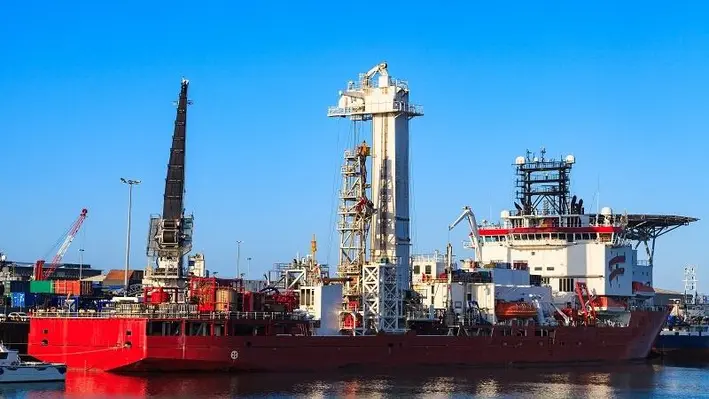

At OWI EU Jonathan Owens, Director, Oil and Gas at Parker LORD, sat down for a virtual fireside chat with Neil Greig, Sales Manager at Helix, to discuss the blossoming relationship that has emerged between the two companies in recent years, culminated by Helix’s use of flexible joints, designed and manufactured by Parker LORD.
Owens opened the discussion by explaining how the relationship between the two companies began when, in 2017, Helix started implementing its Integrated Tension Frame (ITF) onto a number of its vessels. With this step, the company soon discovered that the frame required more flexibility and approached Parker LORD for a solution for their Siem Helix 2 vessel which was operating in Brazil and the Well Enhancer in the UK.
Going into more detail, Greig explained that across their assets they faced a challenge of sheer loading rather than bending. For the Well Enhancer, they developed a system to allow risers to run in relatively shallow depths (80m-200m) ‒ a compensated coil tubing lift frame or dynamic lift frame. This had two integral pistons forming part of the compensation system which worked to an extent but encountered issues with seal designs in the system and potential twisting of the frame due to side loading. A side effect of this was wear inside the pistons which ultimately resulted in the system not moving smoothly and a crabbing effect.
To mitigate these issues, Helix shortened the frame, rigidised it and replaced the two pistons with a single cylinder above, reducing the potential two fail points to one. Despite noticeable improvements, this was still not enough and it was at this point that the company decided to approach Parker LORD who advised the introduction of a flex joint to the system. Sitting just below the frame, this reduced the side loads going into it, everything moved in a smooth linear fashion and, after post job analysis, there was no sign of wear.
Owens took over and noted that additional, “Flexible joints at the top and bottom of a riser on a drilling rig and for diverter flexible joints are very common in drilling to reduce the side loads on the wellhead and accommodate being offset from the drill centre but is not so common on the intervention side. Typically stress joints are relied on for transition. The challenge with an intervention riser versus a drilling riser is obviously higher pressures, small footprints to bear the load of the riser weights, and intervention fluids like solvents.”
“So what we did was divide the work of the two flex elements, one called the load bearing, a flex element, to take the axial load and the fatigue aspects of the work; the seal bearing on the ID is a smaller flex element to handle the pressure and the intervention fluids. One advantage of doing that is we created a redundancy in the system because the pressure housing and the load bearing can take the 10,000psi operation pressure too, so you get a dual-barrier system.
Greig added, “The key point is that instead of using a stress joint which have to effectively be bespoke depending on well conditions, water depths, etc, the flexible joint has a wider range of operations without adjustments which makes it a more cost efficient option."

Entering shallow waters
The two speakers noted that with regions such as the North Sea, shallower waters makes it a much more challenging environment for riser-based well intervention operations and fatigue sensitive wellheads are often a key issue.
But adding flexible joints to the top and bottom of the riser, as Owens demonstrated, helps with the stiffness transition and reduces the loading onto the wellhead to avoid some of the challenging situations such operations can pose.
Greig said, “We certainly will rely on the flexible joint for the upper section as a practical solution to countering those high sheer forces and bending forces. In such environments everything is highly utilised so whatever solution you have in place it is critical you get it right. The flexible joint protects this equipment with the topside one and there is similar argument that you would be protecting the equipment subsea with the lower one. In deep water, such as 1300m, things are a lot more forgiving but it is a much more critical situation at 85m and we certainly wouldn’t be able to entertain them without the flex joint in the system.”
Ensuring safe operations
Following the discussion, Offshore Network spoke to Craig Tennant, Engineering Manager ‒ Riser Systems at Helix Energy Solutions for more on the company’s relationship with Parker LORD and the improvements the flexible joint has brought to their operations.
Tennant commented, “The flexible joint allowed for a small but useful increase in operating envelopes which allowed for safe operations. This is especially important for a failure scenario to ensure we can disconnect the riser before the vessel drifts off station and exceeds allowable structural limits.”
“We use the flexible joint for riser-based operations on the Q7000 and Well Enhancer with a similar set up to the Siem Helix vessels. The addition of the flexible joint on the Well Enhancer has reduced the transfer of loads into the Coiled Tubing Lift Frame with the aim to minimise bending stresses within the frame.”
On the solution opening opportunities in shallower waters, Tennant said, “Introducing a flexible joint alleviates the high reaction forces resisted at surface and improves our working envelope using the existing equipment. The flexible joint is one part of a suite of components and practices that allow us to achieve shallow water operations. Shallow water operations open up riser-based operations where previously only open water wireline operations were available. These are generally located around coastal UK, i.e. central North Sea, but open up potential worldwide such as Brazil and Australia.”
Tennant noted that his company have a campaign planned with Cooper Energy in 2022/2023 in Australia where the Q7000 vessel, with flexible joints on board, will be deployed. He added that it is likely that they will also be operating with riser-based systems in the North Sea next year with the flexible joint as an integral part of the riser stack.
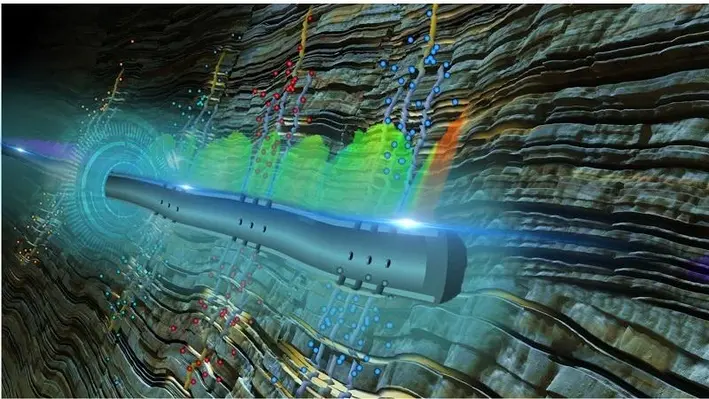
 Halliburton has launched ExpressFiber, a single-use fibre optic cable that offers accurate, direct subsurface measurements, including cross-well communication, at a price point that enables fracture monitoring on every well pad.
Halliburton has launched ExpressFiber, a single-use fibre optic cable that offers accurate, direct subsurface measurements, including cross-well communication, at a price point that enables fracture monitoring on every well pad.
Understanding and optimising well and fracture interference is a significant challenge that operators face today. ExpressFiber uses distributed acoustic sensing (DAS) to acquire a direct measurement of micro seismic, strain, and temperature unlike other cross-well monitoring techniques that provide indirect estimates.
ExpressFiber, paired with Halliburton’s intelligent fracturing and subsurface monitoring services, provides real-time actionable insights of fracture growth and well interference, allowing operators to improve completions designs and gain overall capital efficiency. It can be pumped downhole in offset wells within a couple of hours, and can be installed any time before or during the fracturing operation. ExpressFiber is designed to withstand downhole conditions for the duration of the stimulation treatment before degrading, and has no impact to subsequent fracturing operations in offset wellbores.
Michael Segura, Vice-President of Production Enhancement, commented, “When it comes to direct measurement of the subsurface, fibre is the most direct and trusted sensor of choice, but traditionally it has been expensive and complex to install. Our innovative fibre portfolio transforms fracture monitoring from an application reserved for science wells to a routine solution for regular use on more wells across your asset.”
Through a five-year agreement for North America unconventionals, ExpressFiber will be enabled by FiberLine Intervention (FLI), a wellbore surveying technique from Well-SENSE Technology Limited.
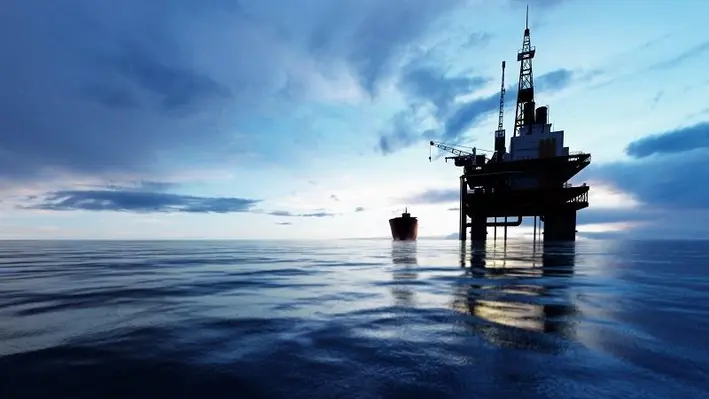

Halliburton Company, in their Q2 2021 results, have pointed to an increase in well intervention activities as partially responsible for their growth in revenue and suggested that a multi-year upcycle may be unfolding.
The company’s Completion and Production revenue in Q2 of 2021 was US$2bn, an increase of US$178mn, or 10%, when compared to Q1, while operating income was US$317mn, an increase of US$65mn, or 26%. These results were driven by increased activity across multiple product service lines in North America land, higher cementing activity in the Eastern Hemisphere and Latin America, increased completion tools sales in the Middle East, the North Sea, and Latin America, as well as higher well intervention services in regions such as the Middle East, Africa and North America.
Drilling and Evaluation revenue for Halliburton in Q2 of 2021 was US$1.7bn, an increase of US$78mn, when compared to Q1 of 2021, while operating income was US$175mn, an increase of US$4mn. These results were due to improved drilling-related services and wireline activity across all regions, along with increased testing services in the Eastern Hemisphere.
Jeff Miller, Chairman, President and CEO of Halliburton, said, “Halliburton’s Completion and Production division margin reached three-year highs, while our Drilling and Evaluation division margin outperformed expectations, setting both divisions up for robust margin growth this year.
“The positive activity momentum we see in North America and international markets today, combined with our expectations for future customer demand, gives us conviction for an unfolding multi-year upcycle.”
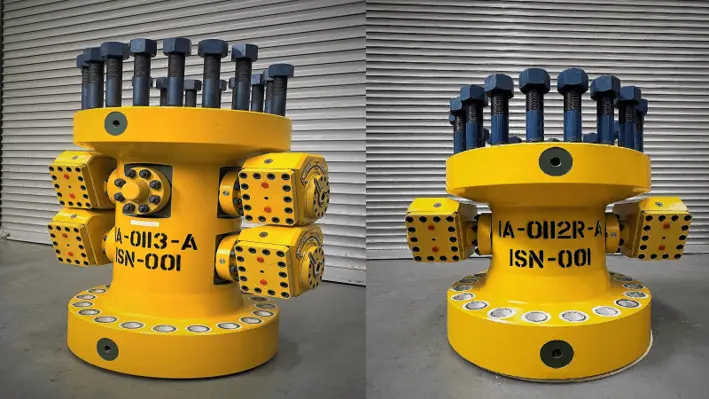

Interventek, a subsea well intervention technology specialist, has been awarded a repeat order from Trendsetter Engineering in Houston, to supply additional 6-3/8”, 15,000psi, open-water Revolution shear-and-seal valves.
The contract comes on the back of Interventek supplying an initial set of the advanced subsea shear-and-seal safety valves in 2020, comprising single and dual cavity variants, and successful systems integration testing within Trendsetter’s new 15,000psi, TRIDENT Modular Subsea Intervention System. Trendsetter is now aiming to roll out further systems to service growing demand in the well intervention and subsea completions market and will use Interventek’s offerings to do so.
The Revolution valves
The Revolution valves are specified for sour service deployment, with dynamic valve bore components, utilising high strength, corrosion-resistant alloys. They benefit from Interventek’s compact design, which allows integration within more modern, lightweight systems, to achieve greater cost and efficiency savings through operational flexibility. The Revolution valves also separate their internal cutting and sealing components for improved performance, whilst meeting rigorous API-17G qualification criteria and being suitable for use in challenging subsea environments.
Mike Cargol, Vice President of Rentals and Services at Trendsetter, commented, “Trendsetter has worked closely with Interventek to achieve our objective of bringing innovation to intervention. Interventek’s compact Revolution valves have proved to be the ideal match for our lightweight and modular Trident systems, enabling us to achieve the goal of delivering HPHT intervention solutions while also realising system size and weight reductions of up to sixty percent when compared to competing systems. The result of this combination is a robust system which can be mobilised rapidly to any geographic region, reconfigured quickly to accommodate hydraulic, riserless light well or open-water risered interventions, and be integrated into a vessel or rig of opportunity with no bespoke modifications. The bottom line is enhanced safety, increased operational efficiency and reduced cost, especially for HPHT applications.”
Gavin Cowie, Managing Director at Interventek, added, “Our continuing partnership with Trendsetter is enabling many operators to realise significant efficiency gains in their subsea intervention operations. The compact, versatile design of our Revolution valve technology provides a great advantage for integration across a range of safety systems. It exceeds the highest industry standards and is suitable for open-water, in-riser and even surface applications. Despite challenging times across the industry, demand for our technology continues to grow and we are grateful to be working with such like-minded, forward-thinking innovators as the team at Trendsetter.”
Interventek’s open-water Revolution valves use the same shear-and-seal technology as the company’s field proven, in-riser safety valves. All products are available in variants to suit a range of system specifications, operational applications and well conditions. The company develops such technology in pursuit of their goal to deliver the best-in-class solutions at half the cost but twice the performance.
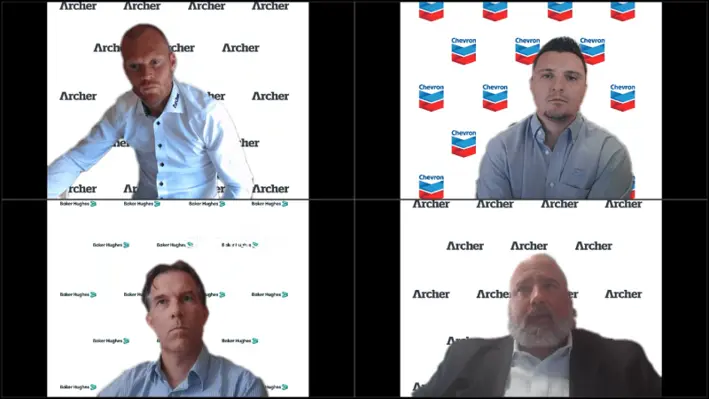

At the Deepwater Decommissioning Gulf of Mexico 2021 Virtual Workshop, Thore Andre Stokkeland, Head of Global Sales Archer Oiltools, Archer, chaired a panel to explore the latest innovations permeating the plug and abandonment (P&A) and decommissioning markets, and what the best practices are for getting new technology recognised by the industry.
Stokkeland began by noting that new technology is inherently designed to reduce risk and improve efficiency and asked the panel to outline some of the benefits which can be achieved for P&A and decommissioning operations through the implementation of these innovations.
Bart Joppe, Well Abandonment Leader at Baker Hughes, focused on the significant cost and time saving that can be unlocked through the utilisation of new technology. Providing an example of this, Joppe described an innovation Baker Hughes brought to the North Sea after they identified an opportunity in the market to remove subsea wellheads more cost-effectively. Traditionally, these have been removed by using a drill pipe-deployed cutting and pulling system from a rig, semisubmersible or a drillship which can be costly while other methods often have similar limitations.
Baker Hughes designed a solution to use a chemical cutter on a wellhead clamp and then power all of it with a ROV. The ROV and the crane wire are the only two things on the water and on deck the only equipment is the bottom-hole assembly. Once this is overboard there is no equipment on the surface. Using this technology, the subsea wellhead can be cut and pulled by two people from any vessel as long as it can deploy the tool overboard. This is a much more cost-effective solution especially for remote wells where getting a rig on location would cost a lot of time, effort and money as well as generate a lot of emissions.
Reducing emissions
Picking up on emissions reduction, the panellists noted that this had fast-become a serious concern of the industry and, therefore, technology that could help operators limit their climate impact was becoming of paramount importance.
Gabriel Barragan, Well Abandonment Advisor, Chevron, said, “We all know that operators are on a strong push to look at carbon emission reduction, with significant pressure from governments, shareholders and customers to do so. It is something pretty fresh and it is still developing now. At Chevron we are brainstorming ideas on how to achieve this such as reducing the risk of fugitive emissions and reducing idle time for rigs. While diesel engines are idly running, emissions are being produced, so reducing this time is a great opportunity. At some point we will come to service providers and see where there technology can help us in this aspect.”
Kevin Squyres, Sales and Service Deliver Manager, Archer, added to this by noting how there are a lot of indirect emissions which are only just being seriously identified as a low hanging fruit to reduce carbon footprint. Saving just a day or two of rig time, for example, is great for the environment. In regards to P&A, when dealing with wells drilled in the 1960s to 1980s the cement technology and care was not there. It is difficult to deal with these nowadays, but new technology can help clients fix these wells.
Stokkeland said, “The industry was very much focused on time saving and cost saving in environments when the rig cost was high. Now we look to reduce rig times not just for the cost saving but also for the emissions savings. Solutions are getting smarter and we can now perform more operations in one run than we could just a few years ago. That will be the way forward, to reduce footprint, reduce rig time and reduce the amount of people on the drilling rig.
Delivering new technology to the market
While at all times there is plethora of new technology being developed, often many fail at the first hurdles or are unable to make an impression on operators and so do not live up to their potential. The panellists therefore explored how providers can ensure that these innovations can make an impact on the market and help operators achieve the value they are designed for.
“Technology development starts by identifying the challenge you want to resolve and how you can address it most effectively. It is really important to understand how the perspective of the operator, customer and regulator as well as ensuring that you are selecting the technology for the right application. There have been lots of innovations where the trial did not work because the right application was not selected,” Joppe commented.
“Also, don’t develop technology and then try and solve the most complex scenario you can think of. Instead build a staircase, select multiple wells of different levels of complexity in a step-by-step testing process and learn as you go.”
Barragan noted, “Take advantage of industry events such as these. Present a technology, do some networking and get contact information from the appropriate people. It is important to understand their well management portfolio which will build your case and value proposition to that operator. Explain at what stage you are in the development phase, is it an early concept? Has a prototype been tested? Or perhaps it has been trialled multiple times. It is important to be transparent about the technology, and this includes being up front about its limitations.”
Squyres echoed these thoughts by noting that in regards to Archer’s Stronghold systems his company tried to be as open and transparent as possible. He said, “If a client comes and says we have this dual casing which is larger than we have done before we won’t just sit there and say we can do anything. Of course we want to say that but it is important to take time, and ensure you have your calculations, case histories and risk assessment as well as ensuring regulators and stakeholders are on board.”
Stokkeland added, “It is about patience and learning. As they say, Rome was not built in a day and it is the same with new technology. You have to learn, you have to go through hurdles sometimes before you end up with a field proven product.”

 At the Deepwater Decommissioning Gulf of Mexico 2021 Virtual Workshop, a panel of industry experts discussed the essential considerations when conducting plug and abandonment (P&A) operations in order to mitigate risk and enhance efficiency.
At the Deepwater Decommissioning Gulf of Mexico 2021 Virtual Workshop, a panel of industry experts discussed the essential considerations when conducting plug and abandonment (P&A) operations in order to mitigate risk and enhance efficiency.
Opening the session, Kenneth Bhalla, Chief Technology Officer at Stress Engineering Services Inc., explained that even in the last couple of decades the design of subsea wells have dramatically changed, which can raise multiple complications to operators looking to conduct P&A operations if this is not properly taken into consideration. He commented, “If you look at wells which came into operation 20-30 years ago, typically they were drilled with a fourth generation blowout preventer (BOP). Relative to fifth and sixth wells, the stack has gotten taller and heavier going from 600 Kips to more than a 1000 Kips. The wellhead and casing system are going to be see much larger loads, whether that is static loads or dynamic loads and the loads of the BOP stack need to be accounted for during P&A operations.”
“Also to note is the conductor casing, which typically today are 36” x 2” X80. Going back 20-30 years ago these wells were designed with X56, 36” x 1” for example. Your conductor casing is lower yield as well as lower stiffness. In addition, if you look at conductor casing design today we push the first connector as low as possible to reduce the fatigue loads. When dealing with the P&A of wells drilled 20-30 years ago we have a different type of well design where the connectors are not as deep as they are today and are thus susceptible to potential fatigue damage and overload as well. You need to understand the fatigue damage caused by prior operations as well.”
Following this, Alex Lawler, Drilling/ Completions Engineer at LLOG Exploration, added that there truly are generational differences between the designs of wells and what was fit for purpose even a decade ago is completely different environment to today. For example, he outlined the production packer generations which can affect everything. If the packer needs to be removed, the operator needs to understand if it is a shift to release or cut to release as well as other considerations such as what the cut zone is, for example.
Therefore, in order to carry out a P&A operation safely and effectively, it is paramount when planning to understand these differences, understand them early, and understand them thoroughly. It is also important to remember that you may require some specific tools designed for the well, and often these have been discontinued since drilling. Sometimes these could be in another part of the world, and if this is not planned for it could cause real problems down the line.
Getting the right information
With older wells that have often changed owners several times, the information and documentation is frequently unavailable. It can therefore be incredibly difficult to find out everything you need to know before planning a P&A operation.
One way to mitigate this is to speak to engineers who have worked on the well previously (preferably those who were involved in drilling and production) and have them on board for the operation. Bhalla said, “I have been involved in a couple of different instances where two particular operators had a number of fields that they stopped development on but they knew they would come back in a year or two for P&A. They knew the people and the rig would change, so what they did was create a file around the wells based on the experience of their engineers there and people involved in earlier campaigns in order to identify future risks.”
Sometimes, especially with much older wells, it is not possible to contact past engineers. If this is the case, the panellists commented that you just have to go back to basics by going to the public records or seeing if you can get information from past operators. By identifying which rig performed the initial drilling, if there were any recompletions, and as much about its life as possible you can patch together some information on the well. The more that can be gathered, the safer and more efficient the P&A will be.
Planning contingencies
The participants continued by emphasising that it was absolutely fundamental contingency plans were put in place, as you are planning to fail without them.
Lawler said, “You are gutting an old house – there are going to be a few surprises. Do as much planning ahead of time and plan those contingencies, because they are going to happen. They are essential if the operation is going to be a success. What we have discovered to be very beneficial is approaching BSEE (or whichever local regulatory body you are dealing with) early. They want to make you attempt to isolate the zone, but if you say you have concerns and point out your contingencies to them you may not get immediate approval but it will not surprise them when the contingency comes up. When the contingency is needed, you will usually need approval very quickly, it could even be a matter of hours, and you will be more likely to get quick approval as they are aware of it.”
Dave Mantei, Subsea Manager at Murphy Oil, echoed these sentiments by adding, “I cannot emphasise how useful early engagement with regulatory bodies is for getting early direction so that when, at 2am the calls comes in and the contingency is needed, that are already on the same page. That is absolutely key in conducting a P&A operation.”
George Coltrin, D&C/ Wells Advisor at Endeavor Management, commented, “A couple of things which can help with these operations is foresight when drilling. When you plan new wells, especially development projects, it is worthwhile putting in the effort to think about the impact on the P&A. Obviously this is not a big driver in the choices you are making at that moment as you are thinking more about well integrity and production, but it is still a driver which should be considered and will help later on.”
“Also, often it seems when we are dealing with P&A is that it is planned more piecemeal. When an operator is drilling a series of exploration wells and need a gap filler P&A is often used to fill this. But we can get into a lot more when considering all the P&A obligations as a portfolio. In an ideal world, operators would get a rig and conduct a whole P&A programme. As an industry we are more efficient with things we do on a regular basis; operations not done for a while tend to be not as efficient as workers have not used the tools for a while or perhaps not ever. So doing a whole P&A campaign would avoid problems and make operations much more efficient,” Coltrin added.
All about the people
Finally, the participants emphasised the importance of people, noting that having competent and experienced employees will ensure P&A operations are conducted much more effectively and safely as, at the end of the day, they are the ones on the front line who will be conducting the operations.
Coltrin said, “With new rigs and equipment what we can do today is incredible. But I would prefer to have mediocre tools with great people rather than mediocre people and great tools. Therefore focusing on people is really one of the best things you can do. If you are trying to reduce the risk of operations, good communication between the office team and rig team is essential, and the best way to do this is get people in the office who have experience on the rig, who know it and have relationships with the engineers out there. You need to put time into the people who are on your team, otherwise you might get teams with mismatches, and risks can be the result.”
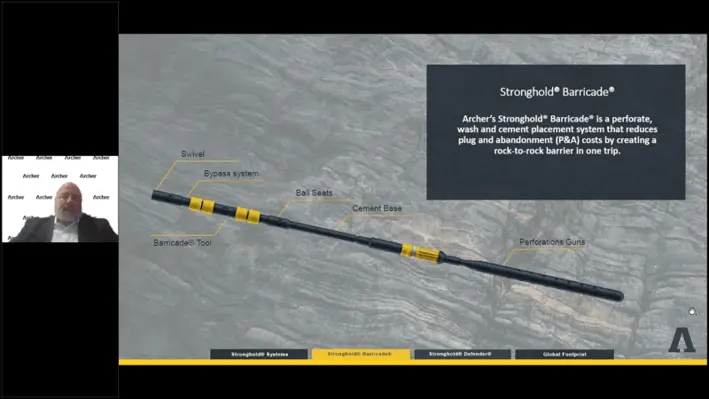
 At the Deepwater Decommissioning Gulf of Mexico 2021 Virtual Workshop, Kevin Squyres, Sales and Service Delivery Manager, Archer, presented the Stronghold systems: the latest set of innovations from Archer Oiltools which offer an economical effective alternative to traditional methods of plug and abandonment (P&A).
At the Deepwater Decommissioning Gulf of Mexico 2021 Virtual Workshop, Kevin Squyres, Sales and Service Delivery Manager, Archer, presented the Stronghold systems: the latest set of innovations from Archer Oiltools which offer an economical effective alternative to traditional methods of plug and abandonment (P&A).
Squyres explained how, by eliminating the need for milling, Archer’s Stronghold systems have the capacity to deliver more efficient P&A operations. When used in conjunction with Tubing Conveyed Perforating (TCP) products and new charge developments, the systems give economical and safe execution of operations providing time and cost savings for customers. The systems have been tried and tested in multiple environments across the globe including, the Gulf of Mexico, Alaska, the North Sea, the Middle East, Asia, and Australia.
Going into more detail, Squyres outlined the three tools for barrier verification and setting which make up Stronghold systems.
Barrier Verification
Archer Oiltools’s verification solutions consist of the Stronghold Defender and Stronghold Fortify systems:
-The Stronghold Defender test system enables operators to efficiently perforate and test an annular barrier. It functions in three steps by first perforating the casing or liner, then verifying the integrity of the annulus, before finally placing barrier material inside the casing.
-The Stronghold Fortify system provides a reliable verification of annular integrity in just one trip which consists of perforation of the casing, testing the integrity of the annulus, verifying the annulus integrity with a unique pressure verification system and cementing across the perforated areas.
Barrier Setting
The Stronghold Barricade system, the main focus of Squyres presentation, perforates, washes, and cements the annulus in order to create a rock-to-rock barrier to achieve permanent caprock integrity.
Usually, this can be achieved in just one trip, which consists of perforating the section, at which point the guns drop automatically; thoroughly washing the perforated annular section, moving down and up if required; placing spacer fluid in the annulus using the calculated pump and pull method; and placing the barrier material using the same technique, once the blank casing is reached the ball will automatically shear out. At this point the pumps are stopped and the operator will pull above expected top of cement to circulate/reverse out any residual cement in the drill pipe.
Squyres explained that in the Gulf of Mexico frequently rat holes are not available and so two trips may be required, but even if this is the case a lot of time and cost can still be saved against a lengthy cut and pull or section milling operation for example.
To demonstrate the benefits of using the Stronghold Barricade system, Squyres outlined a case study from the Gulf of Mexico where an operator needed to set a 330 ft cross sectional cement barrier in 13 3/8” x 20” casing which had no cement in place. The well was located in more than 6,000 ft of water depth and required a barrier placed just above the 20” casing shoe. The operator wanted a barrier to be deployed in order to prevent a cut and pull.
To meet this challenge, Archer deployed the Stronghold Barricade system after working with a local provider to ensure they had the right TCP charge performance. The tool successfully washed and cemented the 330 ft long interval with even rates at 1200 lpm. A successful test thereafter showed the operation was a success and the operator was able to move on with the completion of the P&A.
By using this method, the operator was able to capture value and time by avoiding a cut and pull. Off of the successful completion of this operation, Archer has now been commissioned for several more projects in the region with this client and indeed several others.
Globally, more than 200 P&A plugs have now been installed using Stronghold systems which have delivered 99% operation efficiency, achieved US$250mn in customer savings, and saved 190 tons of CO2 emissions per barrier.
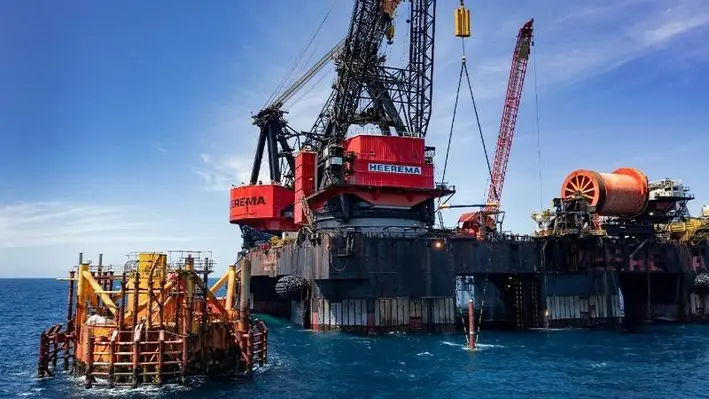

Heerema has announced that last month its deepwater construction vessel, Balder, completed the offshore removal of the Morpeth Tension-leg Platform (TLP) on behalf of client Eni US Operating Company.
The Balder vessel, constructed in Japan in 1978, is 154 metres long and 86 metres wide with a draft of 36 feet (which can be increased to 82 feet when ballast water is taken in). It is capable of a tandem lift of 4,000t and working within water depths from 70 feet and beyond.
Balder mobilised to the Morpeth Field in mid-April to begin executing the removal of the TLP. The campaign involved the engineering, preparation, removal, and disposal of the offshore infrastructure. The removal consisted of the 2,650 short-ton topside, 2,500 short-ton hull, and 1,300 short-tons of tendons and piles.
Following the successful removal of the components, the topside was transported by barge, the tendons and piles on supply vessels, and the hull wet towed for recycling at MARS (Modern American Recycling Services) facilities at various US locations.
This project was the first TLP removal campaign for Heerema and adds another successful decommissioning project to Heerema’s portfolio, following a record-breaking 2020 that saw the company remove 85,277 metric tons of decommissioned structures in one year.
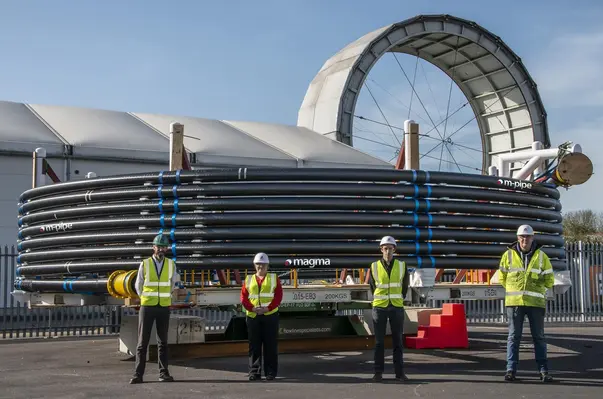
 Magma Global has delivered the world’s first high-pressure composite riser pipe to HWCG’s storage location on the U.S. Gulf Coast, completing its rapidly deployable Offset Flexible Riser (OFR) system.
Magma Global has delivered the world’s first high-pressure composite riser pipe to HWCG’s storage location on the U.S. Gulf Coast, completing its rapidly deployable Offset Flexible Riser (OFR) system.
HWCG, to enhance its rapid deployment emergency well containment system, commissioned Magma Global to qualify and manufacture a high pressure, high temperature m-pipe to be used as a flexible riser connection. The lightweight, flexible m-pipe section will provide additional flow and capture emergency response options for HWCG’s members in the U.S. Gulf of Mexico.
The m-pipe is designed for rapid installation and is suitable for responses where vertical access is restricted and an offset is required such as water depths where the presence of combustible and volatile compounds affect personnel safety or where access under a floating production facility is needed. The system may also be used in deeper waters where more flexibility is desired in managing the marine systems during a response.
The 800 ft long section of m-pipe will provide a flexible riser connection between the capping stack placed on the incident well and a rigid riser suspended from a MODU. The m-pipe will form a horizontally oriented “S” shape between the capping stack and the rigid pipe riser, thus decoupling motion and decreasing surface station-keeping requirements for the temporary production facility. Once in operation, hydrocarbons released from the well flow through the complete riser flow path and are processed on board the temporary production facility to be collected in shuttle tankers for transportation.
Martin Jones, CEO at Magma Global, said, “This is a bittersweet success for Magma. We are proud to supply the first composite flexible riser for high pressure, high temperature hydrocarbons, for use in the Gulf of Mexico, yet we hope it will never have to be used. Nevertheless, m-pipe doesn’t corrode or degrade over time and hence will always be ready to enable HWCG to install at speed and with confidence.”
Bolstering HWCG’s well containment capabilities
HWCG’s response provides for the installation of a capping stack within 7-14 days and the ability to commence contingent flow and capture operations within 18 days, assuming no weather or other uncontrollable delays. Once installed the m-pipe is qualified to operate for at least six months, which is enough time to drill a relief well to provide final well kill and containment.
Mitch Guinn, Technical Director for HWCG, commented, “HWCG was one of the first organisations to accept the responsibility for providing equipment and personnel to respond rapidly and safely to a deepwater well incident. The addition of a flexible riser component to our suite of response equipment further enhances our ability to respond even more efficiently by allowing more flexibility in selecting a temporary production facility and enabling the selected facility to increase its operating window regarding weather conditions. The addition of Magma’s composite m-pipes is a huge benefit for our Members and is seen as one of their critical response components. We hope this work will open the doors to future applications of this breakthrough technology.”
Andy Jefferies, Deep Sea Development Services, and OFR Project Manager for HWCG, added, “The initial concept, and subsequent evolution, of the Offset Flexible Riser builds on the industry’s use of riser technology to manage unique operating conditions and environments requiring incident well flowback as part of a well containment strategy. The engineering and design aspects of this breakthrough technology have been led by DSDS for HWCG. The application of the Magma m-pipe design represents a step change in that technology and brings a time effective solution to well containment for flow and capture operations for all scenarios, but is particularly well suited to shallow water, high-rate gas wells, and wells requiring an offset flow and capture operation.”
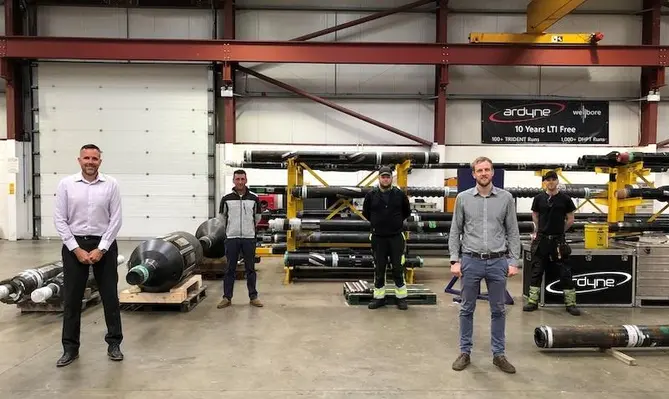

Ardyne, an Aberdeen and Norway-based fishing, milling and casing recovery provider, has announced a strategic alliance with Dynasty Energy Services (Dynasty), a leader in specialised fishing services and plug and abandonment (P&A), to deliver enhanced P&A services around the world.
The exclusive partnership will enable easier access to leading world-class downhole technologies from both companies to deliver major cost and time efficiencies for P&A operations. As part of the agreement, Ardyne’s US team of five people will transfer to Dynasty, ensuring continuity from employees experienced in running Ardyne equipment over the last three years in US onshore and offshore applications.
Worldwide service
The alliance broadens Dynasty’s market offering in the western Hemisphere, while also enhancing Ardyne’s technology offering in the North Sea and wider eastern Hemisphere. It also allows for increased efficiencies for clients in both western and eastern Hemisphere markets.
Alan Fairweather, CEO of Ardyne, commented, “The future of many oil and gas supply chain companies will depend on their ability to adapt to market conditions and to continue identifying opportunities to improve their offering by creating greater operational efficiencies.
“Our strategic alliance with Dynasty is not only exciting for Ardyne, it also presents a model for other companies of a similar size to strengthen their existing technology portfolio and deliver a more robust global offering to clients.”
The alliance’s offerings
Ardyne will bring to the table its systems for casing recovery which save rig time and can provide solutions to challenging operations. The company’s Casing Recovery Toolbox offers flexibility and functionality to optimise operations and quickly adapt to unexpected circumstances.
Ardyne’s TRIDENT system, an integrated, single-trip casing cutting and pulling system has been developed to save rig time while offering precision and additional functionality is also on offer. Additionally, the TITAN system provides power downhole, enabling repeatable, on demand casing cutting and jacking capability in a single trip – it has been run successfully more than 1,200 times around the world.
From Dynasty, the unique Predator thru-casing section milling technology mitigates sustained pressure, providing a secure environment for barrier placement, saving costs through less rig time and multiple trips in the well. The Predator enables stabilised multiple string section milling without damaging outer casing strings. It allows real time decision-making, greater flexibility and contingency planning – especially valuable for P&A campaigns where the original well records are questionable or absent.
Combining Predator with the TRIDENT and TITAN systems enables multiple time saving solutions for P&A operations, with the benefit of being available from one service provider.
Alan Fairweather continued, “Forecasts for the decommissioning market are healthy but to maximise these opportunities will require greater innovation in technology and service provision. The exclusive partnership between Ardyne and Dynasty answers the need for a truly world-class full service fishing, milling and casing recovery offering for the global P&A sector.
“It reaffirms our ongoing commitment to the North Sea well-decom efficiency tool kit and opens our business up to greater opportunities in the locations where Dynasty is already established, including the Gulf of Mexico and US land.”
Keith Alexander, executive VP and chief operations officer of Dynasty Energy Services, added, “Under the partnership agreement, we will supply Ardyne’s technologies to support our services in the Western Hemisphere while Ardyne will supply our products along with their own in the Eastern Hemisphere.
“Combining our technologies to establish a stronger, holistic offering represents a win-win for both companies. However the ultimate winners are the clients who will benefit from easier access to our products to help them achieve greater P&A efficiencies.”
Page 20 of 22
Copyright © 2025 Offshore Network